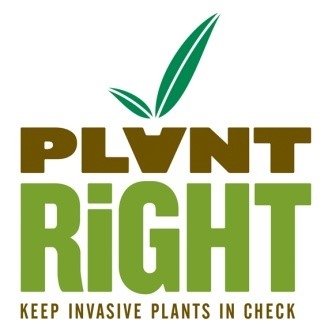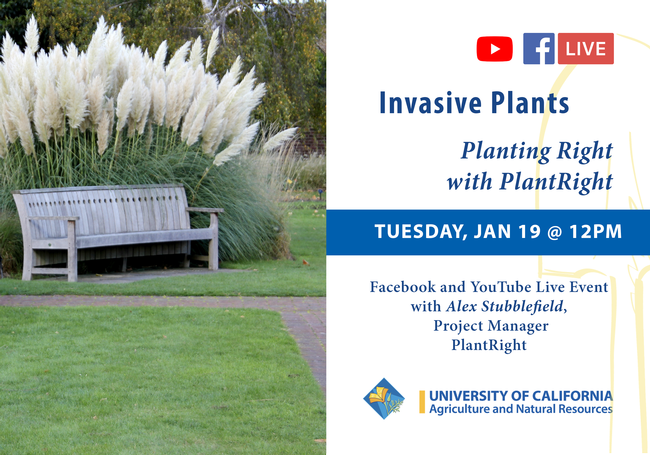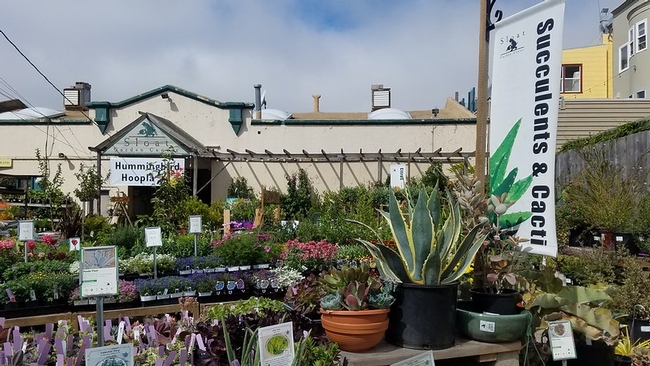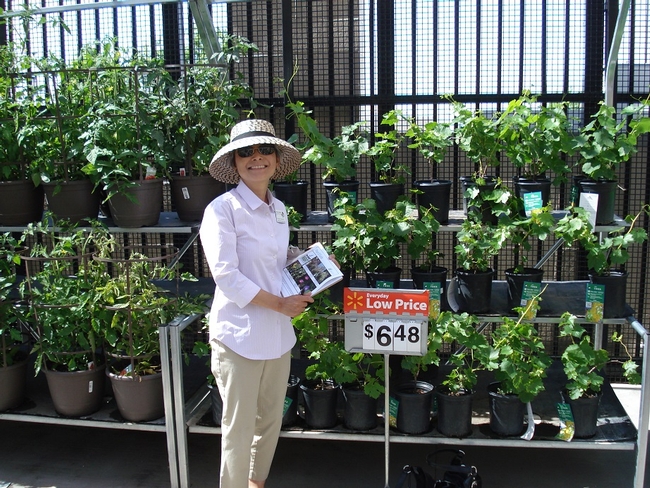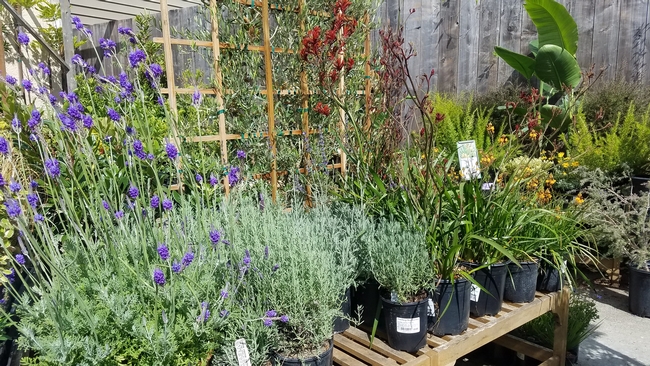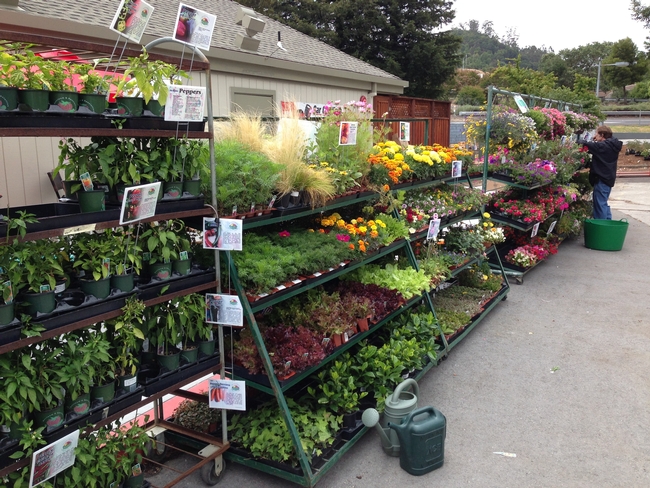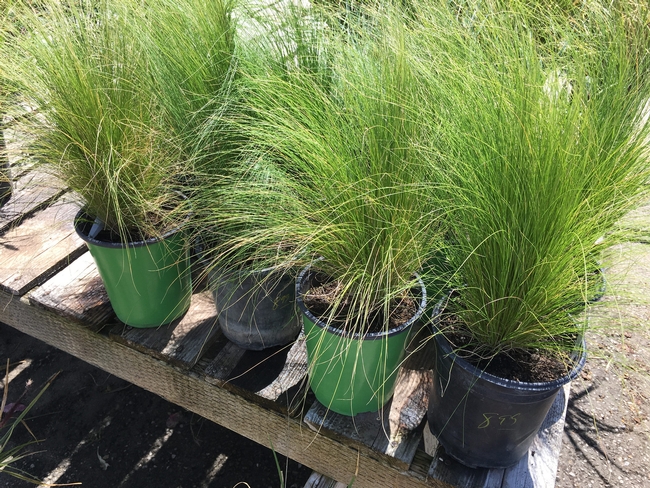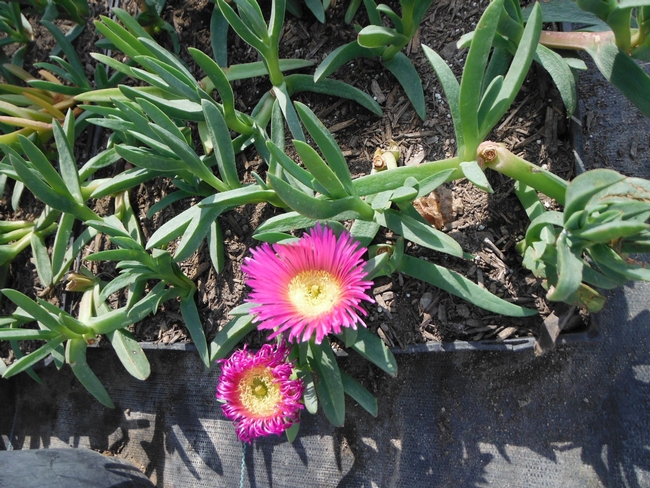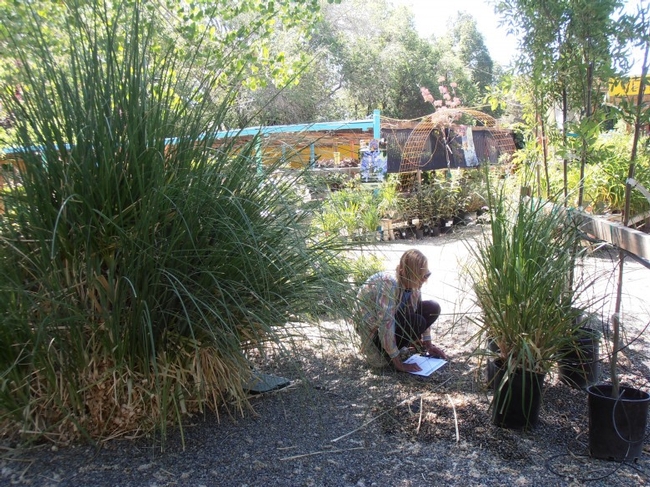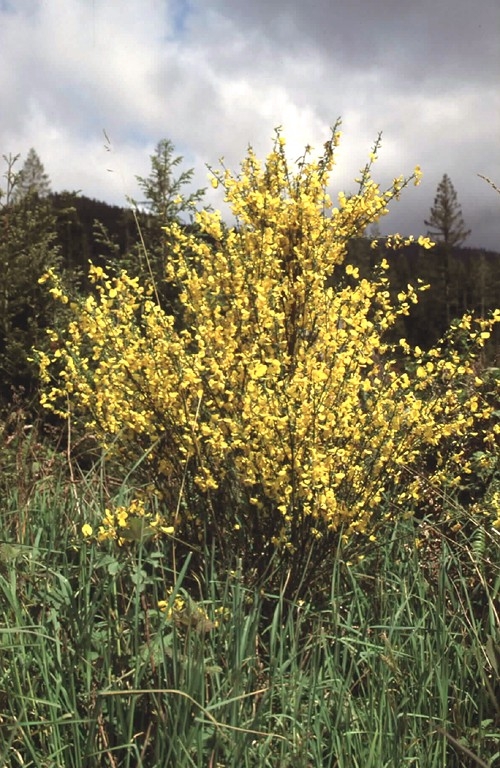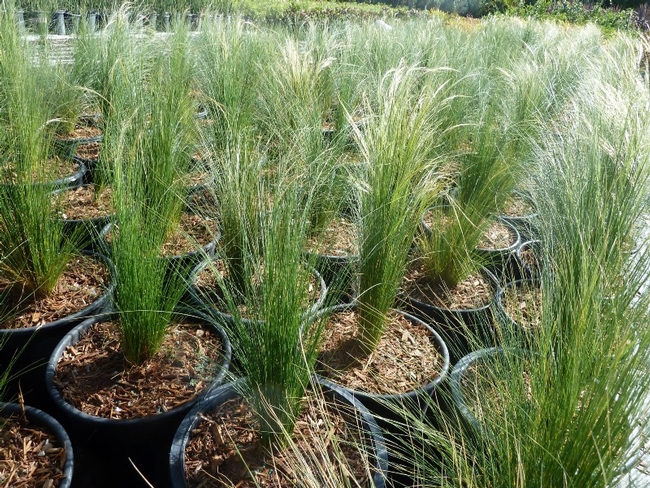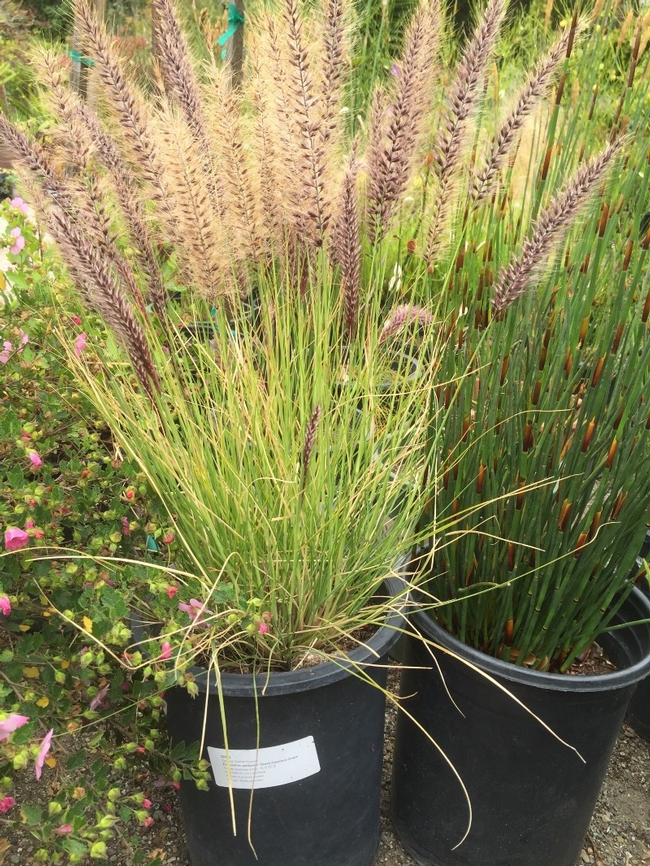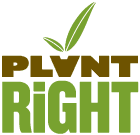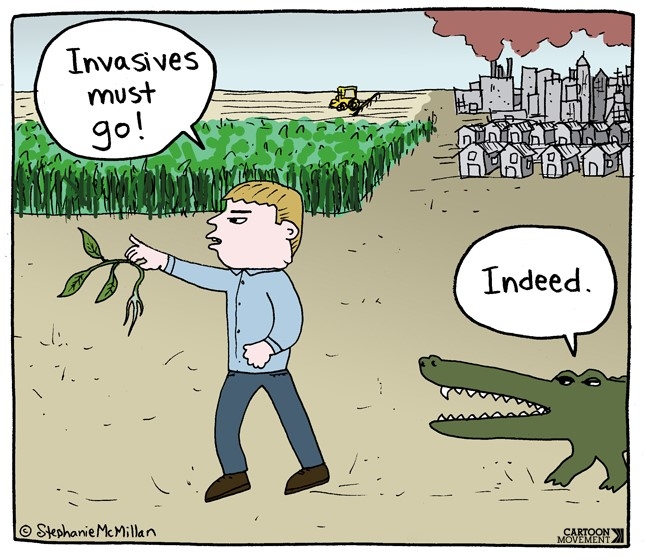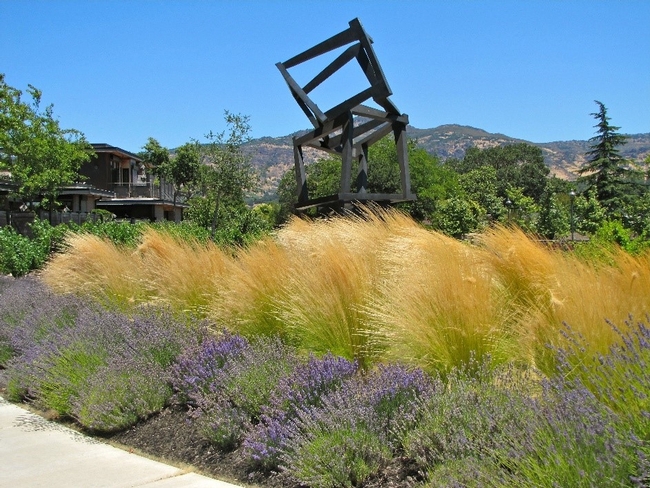Posts Tagged: PlantRight
LIVE: Planting Right with Plant Right Talk
UC Master Gardener Program and PlantRight have partnered for a LIVE Facebook and YouTube talk about invasive plants on Jan. 19at noon. Invasive plants harm the environment and cost California millions of dollars to monitor and manage each year. Almost half of invasive plants in the state get their start through the nursery trade, and many invasive plants are still legal to sell today. Educating people on the impact of invasive plants is just a small piece of removing them from the environment.
What is PlantRight?
PlantRight is a program that works together with the nursery industry, conservation, science, and government agencies to identify and help nurseries voluntarily phase out invasive plants. For each invasive on the list, PlantRight suggests safer, regionally appropriate alternative plants. PlantRight's goal is to teach everyone from landscapers to home gardeners how toplant “right”. Learn more about PlantRight at www.PlantRight.org. Stay up on the latest from PlantRight by following them on Facebook, Twitter, and Instagram.
UC Master Gardener Partnership
The partnership between the UC Master Gardener Program and PlantRight supports planting the right plant in the right place. The right plant in the right place leads to a healthier environment and healthier plants. Because of UC Master Gardener volunteer efforts, PlantRight can survey plant nurseries all over California. Armed with clipboards, cameras, and data sheets, specially trained volunteers collect and report to PlantRight. The information volunteers gather is vital to PlantRight for three main purposes:
- Tracking the sale of invasive plants currently on the plant list and retiring those that have been mostly phased out of retail.
- Helping PlantRight determine whether or not to add candidate plants to the plant list.
- Informing industry outreach strategy with information about sales in different regions and store types.
UC Master Gardener volunteers play a vital role in educating the public on right plant, right place, and helping PlantRight survey California's plant nurseries.
Planting Right with PlantRight, LIVE on Jan. 19
The UC Master Gardener Program is celebrating this great partnership by hosting a free LIVE talk titled Planting Right with PlanRight. No registration is required. The discussion will be live-streamed to Facebook and YouTube on Tuesday, Jan. 19 at noon. Guest speaker, Alex Stubblefield, PlantRight Project manager, will be educating us on invasive plants in California and offering plant alternatives as well as the importance of the annual plant survey.
LIVE talks are an authentic and interactive way to interact with our audience in real-time. Share the Facebook and YouTube Live opportunity with your friends on social media and tune in to the UC Master Gardener Program LIVE broadcast! In the comments section below, let us know what topics or questions you would like answered on Tuesday, Jan. 19, or ideas for future LIVE topics. The event will be recorded and available for later viewing for those who can't make it. Attention UC Master Gardener Volunteers: Whether you join LIVE or watch the recording, be sure to record your continuing education hours in the Volunteer Management System.
Ask your local UC Master Gardener
For more gardening help and local county resources, click here to Find a Program. You will be redirected to your local county website and contact information. UC Master Gardener volunteers, staff, and our extended community's health and safety is our number one priority. Many UC Cooperative Extension offices are offering only phone and virtual services but are here to help, be sure to check your local program for resources. Thank you for your understanding.
PlantRight’s Spring Retail Nursery Survey Re-launches in 2020
What's in store this spring? That is exactly the question on PlantRight's mind as the program launches its 9th Annual Spring Retail Nursery Survey. PlantRight's spring survey helps keep a pulse on the sale of invasive plants in California.
The Spring Retail Nursery Survey began in 2009 under the management of the 501(c)3 non-profit Sustainable Conservation. After development of a comprehensive program and eight successful surveys, Sustainable Conservation transferred the management of the PlantRight program to Plant California Alliance in 2019. Plant California Alliance, an association of horticultural industry professionals, is a great fit to host the PlantRight program. Now, under the new leadership, PlantRight is excited to announce that they are re-launching the survey.
The nursery survey has come a long way from its debut year in 2009 when it included 75 stores in 27 counties to its most recent survey in 2017 which included 332 stores in 45 counties. With almost half of all invasive plants in the state being introduced through the horticultural industry, the nursery survey is an important source of information on the prevalence of invasive plants in California's gardens and landscapes. PlantRight looks forward to continuing the legacy of successful data collection.
The survey would not have had the success it has had so far without the hard work of UC Master Gardener volunteers. Each spring, the nursery survey is conducted throughout California through the participation of volunteers from the UC Master Gardener program and a few other conservation groups.
How PlantRight Uses the Data
The information gathered during the survey allow PlantRight to:
- Collaborate effectively with thousands of plant retailers, wholesalers and growers;
- Provide gardeners with information about invasive plants and choosing beautiful non-invasive alternatives for their gardens;
- Inform our strategy, measure our progress, and keep our plant list relevant.
PlantRight works in partnership with the nursery industry and only releases aggregated data that protects the identity of, and data from, the stores that are surveyed.
To view past survey results visit this page.
UC Master Gardener Program counties may offer volunteer and continuing education hours to UC Master Gardener volunteers who participate in the Spring Survey and visit local nurseries to help PlantRight track the availability of invasive plants in California. Check with your local county coordinator to see if your county will be participating this year. Participation in the 2020 Spring Nursery Survey is easy, educational, and fun!
Volunteers will:
- Register
- View a training video online and pass a short quiz
- Download required survey materials (e.g. survey form & plant ID key)
- Sign up to survey a store in their county
- Visit the store and record information about any invasive plants sold
- Submit information to PlantRight
The survey process takes approximately 2.5 hours to complete. Volunteers start by RSVPing to participate on PlantRight's website. When it becomes available, volunteers will be notified and be able to view a training video. once completed, volunteers will take a short quiz and be able to claim nurseries to survey.
Nurseries will become available to claim on PlantRight.org:
- Southern California: Monday, March 9th at noon
- Northern California: Monday, April 6th at noon
Visit PlantRight.org to create an account and register as a volunteer in your region!
Questions? Contact:
Alex Stubblefield
PlantRight Program Manager
info@plantright.org
(916) 448-3900
PlantRight Takes Time Out on Survey in 2018
2017 by the numbers:
- 172 volunteers
- 332 garden centers
- 45 counties
According to PlantRight's Spring Nursery Survey Fact Sheet, the rate of nurseries selling invasive plants continues to decline. In 2014, 44% of nurseries surveyed were selling locally invasive plants; this rate dropped to 35% in 2015, to 31% in 2016, and 29% in 2017.
Of the nurseries that were selling any invasive plants in 2017, only 8% had more than one species of invasive plant for sale. This is down from 2016, when 10% of stores (that sold any invasive plants) had more than one invasive plant for sale.
No Spring Nursery Survey in 2018
PlantRight will not be conducting the Spring Nursery Survey in 2018. This one year break from the survey allows PlantRight to make a more concerted statewide outreach effort to landscape professionals (e.g. architects, designers and contractors), and the most influential water districts promoting sustainable landscaping.
Successfully engaging these professionals and districts will accelerate PlantRight's work to keep invasive plants off California wildlands and promote climate appropriate alternatives. That's because these groups have significant influence on the nursery supply chain -- what horticultural growers grow, what plants get specified in landscape design, and the plant material that contractors source. Engaging water districts is a cost effective way to educate members of the gardening public, especially those interested in replacing thirsty lawns with lovely looking, climate appropriate landscape plants.
Survey Pause is No Pause in Planting Right
This pause in surveying is in no way a pause in planting right. PlantRight.org remains a trusted resource for UC Master Gardener volunteers. Engage with PlantRight on social media, including: Facebook, Twitter, YouTube, and Instagram. Let PlantRight know about any good works or upcoming events so that it can share your news and announcements on social media or in its email newsletter. You can support PlantRight's Retail Nursery Partners by shopping at their stores.
Volunteers interested in learning more about invasive ornamental plants in California can still earn continuing education hours by completing PlantRight's Continuing Education Program. The online format makes it easy for anyone with an account to participate. After completing the curriculum, participants can pass a 12-question quiz and earn a certificate of achievement.
PlantRight is committed to being UC Master Gardener volunteer's go-to resource for science-based information about horticultural invasive plants. UC Master Gardener volunteers and coordinators can contact PlantRight anytime with questions, PlantRight@suscon.org.
Questions? Contact:
Stephanie Falzone
PlantRight Project Manager
Email: sfalzone@suscon.org
Phone: (415) 977-0380 ext. 350
With PlantRight, You Too Can Prevent the Sale of Invasive Plants
It's that time of year again. Soon, over 150 UC Master Gardener volunteers will head to plant nurseries throughout the state with clipboards, cameras, and data sheets in hand. In this 8th year of the survey, they will be searching for invasive ornamental plants. But why?
The nursery survey is how PlantRight measures what is happening in California's retail nursery industry, and none of it would happen without the survey volunteers. In 2016, 175 volunteers (many of them UC Master Gardener volunteers) were trained by PlantRight to survey for invasive plants at retail locations throughout the state. If approved by your county, hours spent participating in the survey can count towards certification volunteer hour requirements. Check with your local county program coordinator.
Interested in participating?
- Learn more about the survey and results from past surveys.
- Register to receive updates about the survey and gain access to the online training.
- View either a refresher video for returning volunteersorawebinar for new volunteers that discusses invasive plants, how to conduct the survey, and includes a guest speaker each year.
- The survey starts earlier in Southern California (San Luis Obispo, Kern, San Bernardino counties and south) than it does in north of those counties.
- Southern California: Nurseries are available to claim and the survey begins on February 27th, going through May.
- Northern California: Nurseries are available to claim and the survey begins on April 3rd, going until June 20th.
- This year's webinar includes an Introduction to the Watershed Approach to Landscaping by Pamela Berstler from G3: Green Gardens Group.
- Take a short quiz to demonstrate your newfound knowledge.
- Access to survey materials and claim your survey store (or multiple stores.
- Visit the store/s and record information about any invasive plants or candidate plants being sold.
- Submit information to PlantRight
Why is the survey important?
The information volunteers gather is vital to PlantRight for three main purposes:
1. Tracking the sale of invasive plants currently on the plant list, and retiring those that have been largely phased out of retail.
To keep the list relevant, as plants from the original list are no longer sold, they are “retired.” To retire a plant, it must be found at less than 1% of nurseries surveyed for 3 years in a row. This doesn't mean that they are gone from our landscapes. Plants like Scotch broom (Cystisus scoparius) and arundo (Arundo donax) have already invaded wildlands in California, and there's still much work to be done to control their spread. Since the invasive plant list was first published in 2006, 15 plants have been retired, which is excellent progress. You can help with these retired plants by removing them if they are on your property or volunteering with groups that remove invasive plants.
Three plants were added in 2014: Mexican feathergrass (Stipa/Nassella tenuissima), yellow flag iris (Iris pseudacorus), and water hyacinth (Eichhornia crassipes).
2. Helping PlantRight determine whether or not to add candidate plants to the plant list.
In late 2012, PlantRight recruited several horticultural experts (all volunteers, from diverse sectors of industry, academia and conservation) to establish their Plant List Committee. These individuals engage in the complex, involved, and time-intensive process of working with PlantRight to decide which surveyed plants to add to the invasive plant list and which non-invasive alternatives to suggest. Each fall, PlantRight solicits input from the Plant List Committee and an extended network of experts to see what plants might be hopping the garden fence and escaping into wildlands.
To appear on PlantRight's invasive list, a plant must meet the following criteria:
- When evaluated by PlantRight's Plant Risk Evaluator (PRE), it rates as being “high risk” or is on the Cal-IPC Inventory
- It is found in 3% or more retailers surveyed in the annual Spring Nursery Survey
- Its invasive range is large enough to warrant action, and its inclusion is supported by both the Plant List Committee and Steering Committee
There's one more way PlantRight uses the survey information – helping use their energy and time strategically.
3. Informing industry outreach strategy with information about sales in different regions and store types.
Get an exclusive look at the results of this year's survey (before they go online) by attending the 2017 UC Master Gardener Conference in Long Beach on August 22-25, where PlantRight will be giving a presentation and celebrating the participation of UC Master Gardener volunteers in this effort.
Can't participate in the survey?
You can still help by sharing what you've just read, sharing the Plant List or Mexican feathergrass species spotlight, shopping at PlantRight retail partner locations, and educating your friends and neighbors. You can also participate in their Continuing Education program if you would like to expand your knowledge about invasive garden plants in California. You are welcome to still watch the webinar if you can't participate in the survey. A recording of each webinar will be shared on the PlantRight YouTube channel immediately after it concludes.
Learn more about PlantRight at www.PlantRight.org. Stay up on the latest from PlantRight on Facebook and Twitter, and Instagram. Have a question? Contact us at PlantRight@suscon.org.
Note: this blog post is an updated and abridged version of Where invasive plants are sold in California – and how we know, which was shared by PlantRight in October 2016 and summarized the results of the 2016 survey and plant list update process.
Little Less Conversation, Little More Action (Please)
I saw Elvis today.
Actually, he's quite the regular at Sustainable Conservation's San Francisco headquarters these days. More than a titan among musical icons “The King” has become a muse to the PlantRight team, especially this National Invasive Species Awareness Week . We love Elvis' “A Little Less Conversation” because it might as well be our theme song for actionable awareness. We can't guarantee you'll be dancing along by the end of this article, but we do guarantee providing you with a few awareness-raising resources, a deeper understanding of what's holding back the hold-outs from taking positive action, and most importantly what we can do about it.
PlantRight defines “actionable awareness” as what happens when individuals and businesses are made aware of an opportunity to be part of the solution to California's costly (economically and environmentally) invasive garden plant problem, and make a conscious decision to act. Invasive plants (despite the fact that many are deceptively beautiful and drought resistant) outcompete native plants, alter soil chemistry, increase wildfire risk, clog our waterways and can severely compromise agricultural yields and real estate value. If that weren't enough, invasive species are the second greatest threat to biodiversity after human development.
Awareness of these facts alone will not fix any of these issues; however, add action to the mix and you have a proven formula for problem solving. PlantRight's idea of problem solving is collaborating with the industry to voluntarily phase invasive plants out of the supply chain and replace them with high-quality (i.e. non-invasive) plants. Voila! Together we prevent new invasive garden plants from wreaking havoc on our wild lands and taxpayer wallets.
A Little Less Conversation, a Little More Action Please
The fact that 50% of California's invasive plants are of horticultural origin (Bell et al. 2007) is a source of both conversation and dismay. Yet from PlantRight's perspective this 50% is a great source of optimism because it's proof of a huge opportunity the nursery industry can play in preventing future invasive plant introductions. In past decades ornamental plant breeders and growers had little or no ability to predict a plant's invasive risk in a given region, and most invasions were well-intentioned accidents. Lucky for us we finally have science-based plant risk evaluation tools to prevent new invasive plant introductions. Not so lucky for us is that popular plants travel, and a delightful Dr. Jekyll plant in one region, may become a hideous Mr. Hyde plant and landscape transformer in a different region. It's about the right plant in the right place, but just where to begin, if we're to turn this talk into actionable awareness?
In the beginning there was lots of conversation and lots of listening sessions that Sustainable Conservation conducted with a diverse group of nursery industry stakeholders, from large ornamental growers, retail nurseries, plant scientists, trade associations and government agencies. University of California Agriculture and Natural Resources (UC ANR) has been part of this group from the start, providing academic expertise on weeds and calculating their risk. This group's official moniker is “California Horticultural Invasive Prevention,” but we prefer Cal-HIP.
With a couple years of listening and learning under our belts, and funding from Sustainable Conservation, the PlantRight program was ready for action: action engaging the nursery industry in voluntarily phasing our invasive ornamental plants and promoting, in their place, non-invasive alternatives.
Our first order of business was to measure the scope of the problem and establish a baseline. Working closely with plant science experts to identify the most problematic invasive ornamental plants, and industry experts to identify non-invasive alternatives, we created our first PlantRight plant list. If you can measure it you can manage it, we like to say - to do this, we rely on an annual Spring Nursery Survey. Each spring, partner with UC Master Gardener volunteers to survey more than 200 nurseries and garden centers around the state, and in the process track the retail market for invasive garden plants in California.
Along with informing PlantRight's program strategy, the annual survey allows us to keep PlantRight's plant list manageable and up to date – we add new invaders and retire those that are largely phased out of the trade. It is our program's calling card, and the starting point for conversations with prospective partners and skeptics, alike. It has earned the enthusiastic support of California Certified Nursery Professionals (CCNPro), SaveOurWater, and more.
A Little Less Fight, a Little More Spark
Buying non-invasive means many things, including protecting native species, being good stewards of our beautiful open spaces and waterways, being fiscally responsible and preventing additional taxpayer dollars going to avoidable invasive plant eradication efforts. Buying non-invasive plants is casting a vote for the kind of world you want to live in.
So, why on earth do people buy invasive plants in the first place? (Hint: One big reason has to do with what happens when you turn off the lights). Yep, people who purchased invasive plants were in the dark – they did not know.
In 2013, we learned that the primary drivers behind consumer purchases of invasive plants are: 1) aesthetics – it looks good; and, 2) there was no information on the plant indicating “invasive.” In other words the majority of invasive plant purchases (by consumers) are impulse purchases and would not have occurred had the plant been properly identified as “invasive.”
Nan Sterman, award winning garden writer and host of PBS' “A Growing Passion,” has her own answer to this vexing invasive plant question. “It's about visual influence,” says Sterman. “People tend to buy and plant what they see in their local gardens and landscapes. “ According to Sterman, these include the very people who religiously recycle, buy high-efficiency appliances, and drive electric cars, yet they can't imagine beautiful, drought tolerant plants posing environmental problems. Nassella tenuissima, or Mexican feathergrass, is one such culprit that has been romancing many well-intentioned Californians.
Come On, Come On…Come On, Come On
Ready to channel your inner Elvis and tackle invasive garden plant problems in ways that make economic sense? (Of course you are!) Here are a few resources to empower more action in your community.
- Share this article
- Sign up for the Spring Nursery Survey Webinar and Training
- View our Plant List at PlantRight.org
- Invasive Plant IQ Test
- View our 2016 Invasive Plants Webinar
- Little Less Conversation, Little More Action (Please) - Video
So this National Invasive Species Awareness Week we encourage you to crank up that volume and bust a move with the PlantRight community (blue suede shoes optional), knowing that YOU are driving actionable awareness…this week, this month and in the years ahead.
Thank you, thankyouverymuch.





